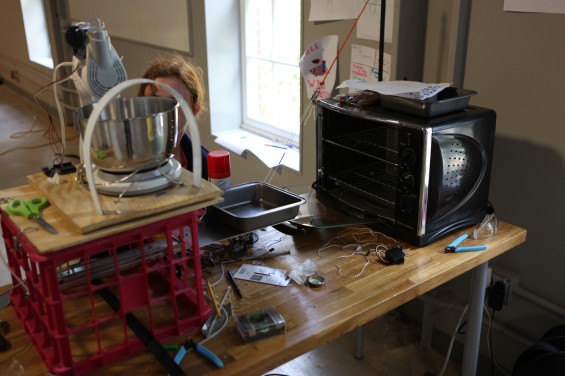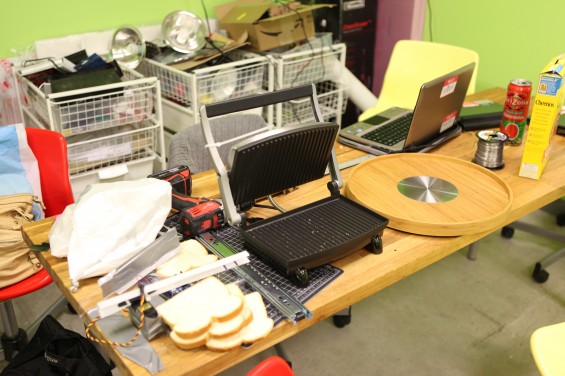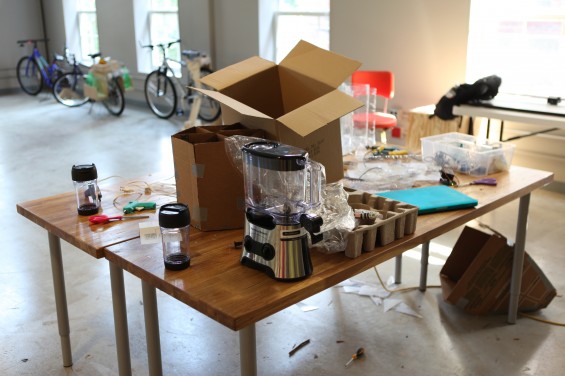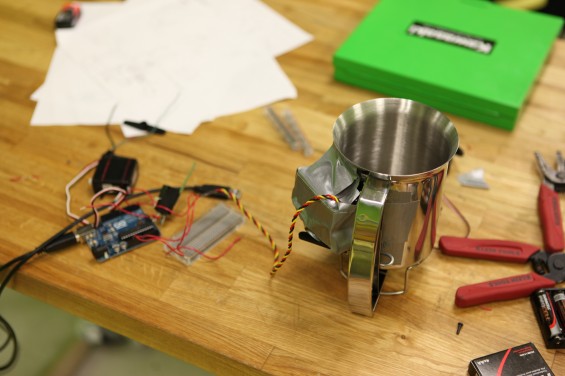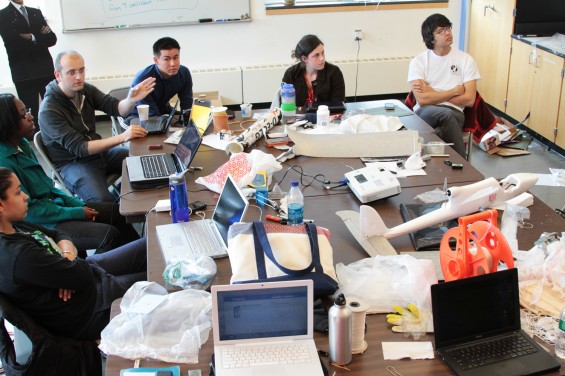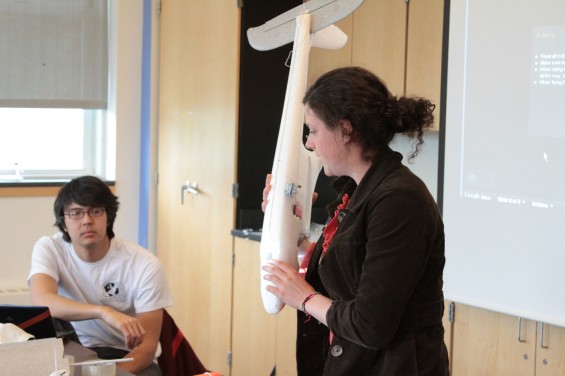This past September, NuVu's Superhero Collection premiered at the
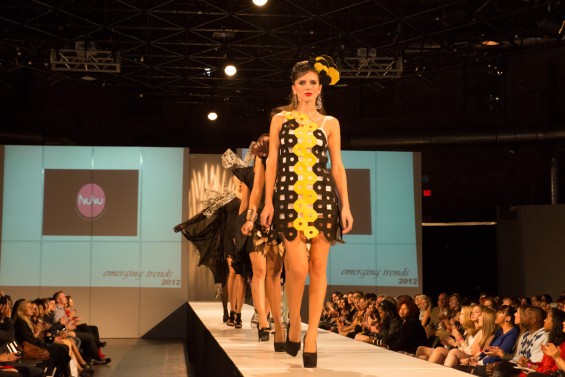
Photo Credit:
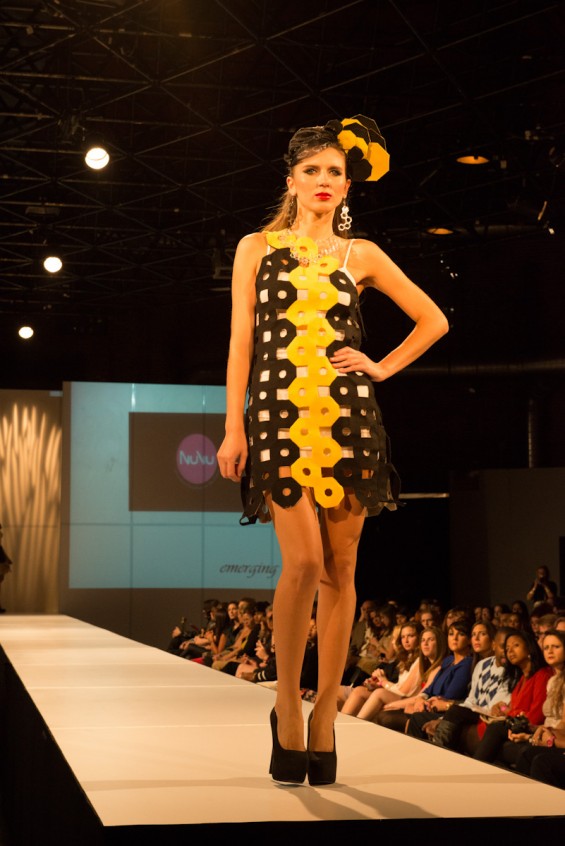
The
Honeycomb Dress is inspired by the concepts of negative space and pure geometry. The dress takes the idea of a simple, visually recognizable geometric shape - the octagon - and replicates it across the dress and other feature pieces (earrings, necklace, head piece), and theoretically across any object or material, in this way imbibing the piece with a super-hero like quality. The octagonal pattern remains distinguishable and personal to the hypothetical hero who would wear it. The dress is constructed of laser-cut octagonal felt pieces sewed together with interfacing ironed onto the back of the pieces to maintain the shape of the dress. There are a total of four pieces (plus two mesh sides) that make up the Honeycomb dress. It's bold, comfortable, cool, and meant for action!
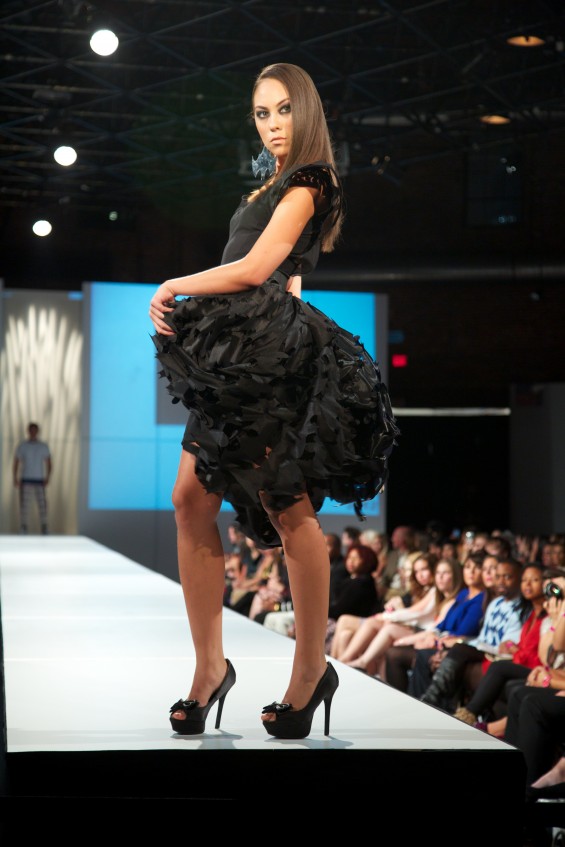
The
Batman Dress is inspired by The Caped Crusade and merges Batmans secret identity and alter-ego of a superhero into a single fashion. The billowing skirt of the dress is composed of large cut patterns of the Batman logo, and the shoulder cuffs are composed of similar yet smaller cut patterns.

The
Samurai is inspired by the armors worn by Japanese Samurai, the all-male military nobility of pre-Industrial Japan, but translated into a modern everyday wear for females. The ancient Samurai armor was constructed from leather and metal and was much lighter than its medieval armor counterpart to provide ease of movement. While still keeping the lightness and agility of ancient Samurai armor, the Samurai transposes the powers and protective attributes to women. The Samurai includes a scale armor made of renewable wood veneers inspired by the ancient small steel scales (konaze), laced together with cotton cords (odoshige) and shoulder pads made of leather.

The design for the
Super Max pants is inspired by Captain America, a comic book superhero created during WWII who wore a suit with an American flag motif. The goal for the pants is to subtly integrate the patterns and colors of the American flag in an original way. The American flag pattern was created using an algorithm in Processing, a programming platform, which randomly generated different combinations of striped patterns in red, white, and blue. The pants are assembled from laser-cut pieces of fabric with the striped American flag pattern ironed onto them. The Super Max shirt is inspired by the S-logo on Superman's chest. Using laser-cutting technology, the M letter is formed of small round perforated holes on the cotton shirt. The Super Max pants and shirt are designed to be comfortable for a modern-day superhero working or lounging in a casual setting.
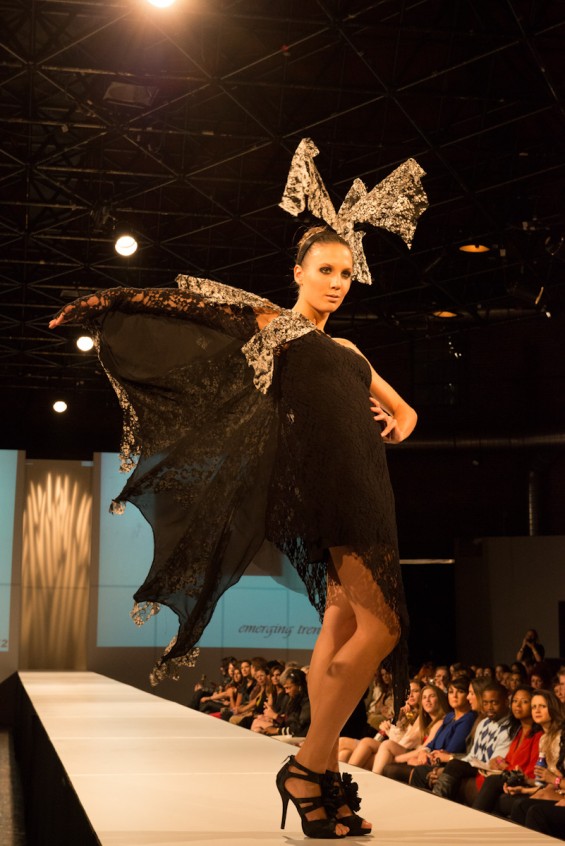 The Lionfish
The Lionfish dress takes its inspiration from the lionfish, or Pterois miles, a venomous fish that is found in the Indian Ocean and the Red Sea. Best known for its venomous spines and long dragon-like fins, the Lionfish dress recreates these spines and fins out of laser-cut clear acrylic and lace fabric. The different textured lace was carefully spray-mounted onto the acrylic. Embedded inside the fins are LED lights that change colors with movement. The asymmetrical composition of the dress and the changing LED lights create the sense of evolution. The
Design Team for The Superhero Collection includes:
Honeycomb Dress Designers: Klara Ingersoll Yalie Serrano
Batman Dress Designer: Amro Arida
Samurai Designers: Eli Clark John Idrobo
Super Max Designer: Max Ingersoll
The Lionfish Designer: Sam Ingersoll
Collection Directors: Saba Ghole Jennifer Jacobs Theressa Lee
Collection Assistant Director: Ryan Wistort
PRESS:
BostInno The Tufts Daily Blog The Daily Free Press The Fashion Hub Angela Christoforos

:rotate(0)/p39f1jed4mgd288myquiu5yecweg)
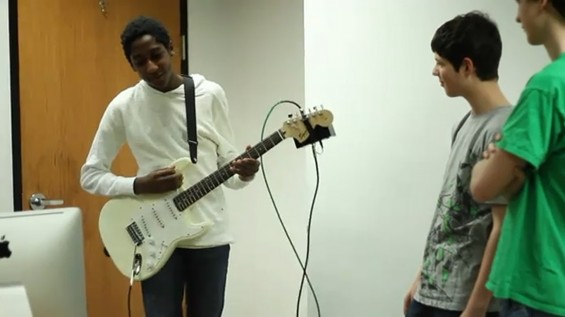 Design-Build Team: Angelo Cabral, Trevor Hoffman, Stephen Phillips, Omari Spears In our DIY studio we first brainstormed many ideas for what to do. After narrowing down the list, we decided to make an accelerometer-controlled wah pedal. We thought this would be a good device to make, as we were taking an object that is usually used with a performer's foot, and instead would re-make it so that the performer would have to shake the guitar for the wah device to function.
Design-Build Team: Angelo Cabral, Trevor Hoffman, Stephen Phillips, Omari Spears In our DIY studio we first brainstormed many ideas for what to do. After narrowing down the list, we decided to make an accelerometer-controlled wah pedal. We thought this would be a good device to make, as we were taking an object that is usually used with a performer's foot, and instead would re-make it so that the performer would have to shake the guitar for the wah device to function. 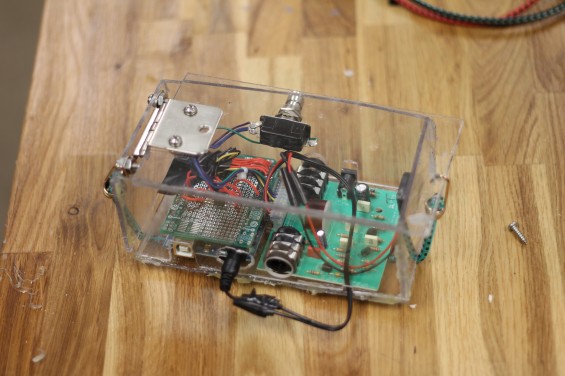
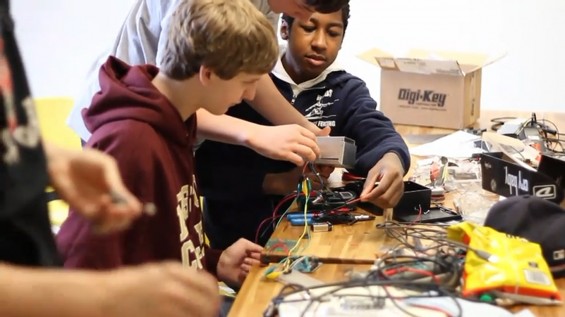

:rotate(0)/t8264scfea4rhtdnbjh5cnazkwiq)
